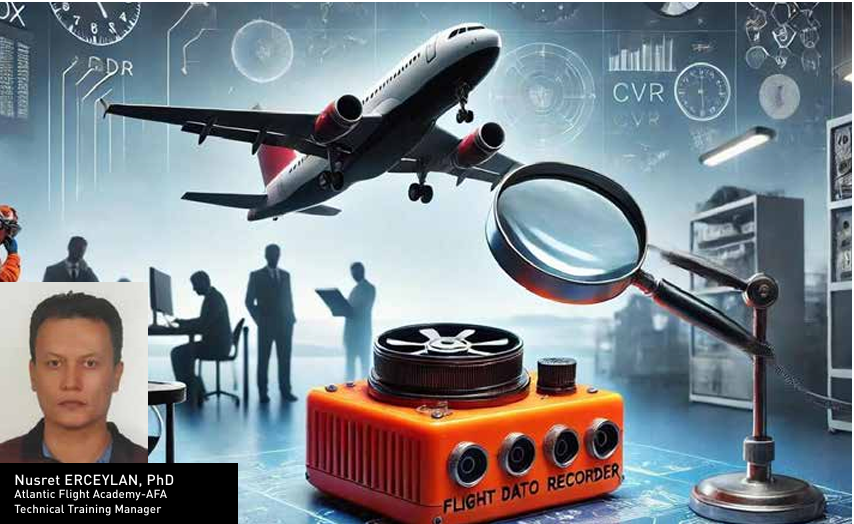
ROOTS OF CREW RESOURCE MANAGEMENT IN AVIATION
It is an inevitable truth that, it will never be possible to reduce human error to zero. The nature of human being has always potential to make mistakes under almost any condition or situation, especially under stressful conditions. In this manner, despite the enhancements in aviation technology and higher standards implemented, human error continues to be the major cause in most of the aircraft accidents. Since the late 70s, Crew Resource Management (CRM) has become a perfect tool to enhance non-technical skills of flight crews, proactively mitigate the negative effects of threats and errors during flight operations. Throughout the evolution of CRM in the last 45 years, even its coverage widened from to cockpit to almost all areas of aviation, the focus has been remained constant; minimizing the incidents and accidents caused by human factors and make the air transport safer.
Beginning from the early 50s, the use of jet-powered aircraft in airline transportation led to the rapid development of commercial air transportation. In addition to the advantages such as the ability of new generation passenger aircraft to reach longer distances faster and to carry more passengers, the complexity of modern aircraft systems has brought new risks for pilots. Factors such as the increase in the number of flight crew required for growing modern passenger aircrafts, the rapid pace of transition to new and complex systems, and the effort to meet the increasing passenger demand with more frequent flights have led to an increase in aircraft accidents.
To prevent the accidents that occurred, detailed studies were carried out, and the technical and mechanical factors causing the accidents were tried to be eliminated quickly. With the support of developing technology, turbo-jet engines have become safer, aircraft navigation and avionics systems have been developed, and electronic warning systems have been widely used 1.
One of the most remarkable developments on the prevention of accidents was the use of flight recorders. Between the years 1950-70, Flight Data Recorder (FDR) and Cockpit Voice Recorder (CVR) devices were started to be used, and their use was made compulsory by the International Civil Aviation Organization (ICAO). All technical data and team conversations collected from these recording devices showed that, most of the accidents were caused by human errors, and these errors occur mostly due to interpersonal communication, poor decision making under stress and lack of effective leadership.
The 70s went down in history as a period in aviation history when fatal plane crashes occurred one after the other. These unfortunate events have changed the course of accident prevention studies in aviation and paved the way for the focus of research to evolve from technical factors to human factors. Briefly mentioning the most important of these events that changed the perspective of aviation safety will provide a better understanding of the factors affecting the emergence of CRM.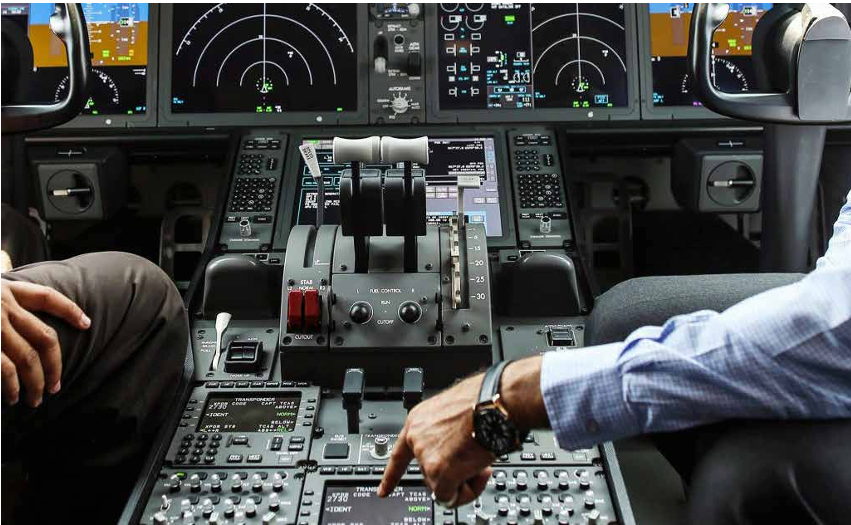
Eastern Air Lines Flight 401:
In December 1972, a Lockheed L-1011-1 Tristar crashed into the Everglades, Florida. The crash occurred because of flight crews concentrated on troubleshooting inoperative landing gear indicator light. Focusing on the problem, crew accidentally pressed the button that took the plane out of autopilot control and no one in the cockpit noticed as a result, the plane crashed near the airport causing 101 passengers and crew died. In the research conducted after the accident, it was reported that all three people in the cockpit focused on the landing gear warning light at the same time, the necessary crew coordination to control the aircraft was not accomplished, the communication between the crew was poor and their situational awareness was not sufficient. In the technical examination of the aircraft, it was revealed that the landing gear was actually opened, and the malfunction was only caused by the explosion of the warning light bulb.
Tenerife Disaster: Two Boeing-747, KLM and Pan Am, collided on the runway in March 1977. Since a security threat was reported at Gran Canaria airport on the day of the accident, all aircraft bound for it were diverted to Los Rodeos airport, which caused a very busy day at the airport. The KLM aircraft, which had been waiting in line for more than two hours to take off, headed the runway and requested take-off permission. The heavy fog on the square restricted the view of both the tower and the pilots, and the Pan-Am aircraft, which landed on the runway at the same time, collided disastrously with the accelerating KLM aircraft. The post-accident investigation clearly revealed that there had been a major communication error between the KLM flight crew. The captain started the take-off without understanding the statements of the second pilot speaking to the tower, the second pilot remained a spectator to this move of the second pilot due to the high-power distance between them and the collision occurred within seconds. Among the other contributor factors, KLM Captain’s erroneous decision to take off has played important role in this deadliest accident in aviation history.
United Airlines Flight 173:
In December of 1978, a United Airlines DC-8 on approach into Portland, Oregon, requested delay vectors due to an unsafe landing gear indication. While troubleshooting the unsafe indication, they failed to monitor their fuel state. The flight crews’ fixation on the landing gear indication resulted in fuel starvation and subsequent crash near the Portland airport. According to the investigation report, the failure of the captain to monitor properly the aircraft’s fuel level and to properly respond to the low fuel level and the crewmembers’ advisories regarding the fuel state were the main reasons of the accident. Contributing to the accident was the failure of the other crewmembers to fully comprehend the critically of the fuel state or to successfully communicate their concern to the captain. The landing gear problem had just disordered effect on the flight crew’s performance. The main reason was the breakdown in crew management and teamwork during a malfunction of an aircraft system in flight.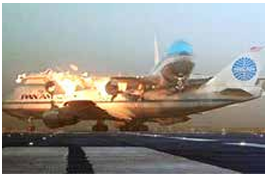
Air Ontario-1363: A Fokker F28-1000 aircraft crashed just after take-off in Dryden in 1979. Operational lapses and environmental threats had important contribution to the accident which has been perceived as a driver to broad the scope of CRM trainings.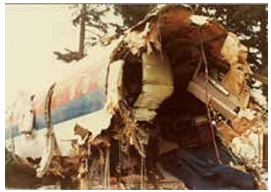
Those accidents eventually led to awareness of human factors’ importance and training programs emerged by airline companies during 70s.2 The CRM concept in aviation was first discussed in a workshop organized by National Aeronautics and Space Administration (NASA) in 1979. Within the scope of the workshop, the communication and coordination problems among the crew that resulted with fatal accidents were discussed and a “Cockpit Resource Management” program offered for the airline companies.
Evolution of CRM
CRM experienced remarkable growth. While the initial objective was to prevent aircraft accidents owing to flawed cockpit crew attitude, communication, and leadership, it evolved from ‘cockpit’ to ‘crew’ in a short period of time. CRM has also adapted to optimize human performance and reduce human errors.
The evolution of CRM is generally summarized in five distinct generations analogy. After the expansion of beyond the cockpit, CRM has become a systematic concept in aviation safety. Today, along with the error management concept, CRM focuses on involves cognitive and social skills, encompasses a wide range of knowledge and attitudes including situation awareness, problem solving, decision making, monitoring, communications, teamwork, and cultural issues covering not only pilots but also flight attendants, maintenance personnel, dispatchers, and air-traffic controllers.
1st Generation: Cockpit Resource Management: The conference ‘Resource Management on the Flightdeck’ sponsored by the National Aeronautics and Space Administration (NASA) in 1979 was attracted a considerable attention of the aviation sector. It was the outgrowth of the long research into the aviation accidents and the role of the human factors. The research results revealed that human errors in communication, leadership and decision making are the main causes the accidents. It is demonstrated the necessity to implement a resource management training program in which the human factor was also included in all aspects. In this way, the first-generation program was named as “Cockpit Resource Management” since it was designed to include the pilots only.
United Airlines showed special interest to the conference. The company had an accident in 1965 which results in 43 people lost their lives. During the landing of the Boeing-727 model under the control of the co-pilot, the captain’s intervention on the throttle levers caused the accident. Captain ignored co-pilot’s warning and prevented his intervention to correct the problem. This accident clearly revealed that there was a serious lack of CRM within the company. Shortly after the conference, United Airlines developed a CRM training program with the support of NASA and Texas University psychology professor Robert Helmreich and his team. In this manner, the first comprehensive CRM program was put into practice within United Airlines in 1981. 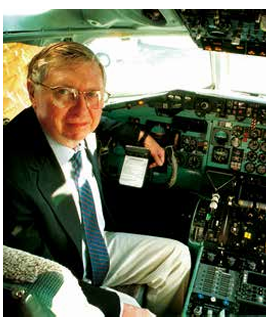

Following United Airlines, other US airline companies also created their own CRM programs and started the initial CRM trainings for their pilots. The feedback from the CRM trainings from United Airlines indicated that the main reason of the communication breakdown in the cockpit is the power distance between the captains and the first officers. This resulted with redesignation the training program with a captain focus.
United Airlines’ first-generation CRM program was based on Blake and Mouton (1964)’s Management Style Matrix (Managerial Grid). In the matrix, leadership style of the pilots was evaluated with either business or human-centered perspective aiming to determine their managing styles so correcting the mistakes in individual behaviors such as the authoritarian behavior. Other airlines’ programs also focused on individual psychological deficiencies, leadership style, communication, problem solving, etc. The most important deficiency of this generation’s programs was that CRM trainings were applied only once for pilots. It was usually one or two-day, one-time awareness training. The necessity of applying these trainings to all pilots at regular intervals in the form of refresher trainings was understood only after a certain period. The trainings, which were initially taught only in the classroom environment, have been expanded by using simulator facilities. Although most of the pilots trained, it is seen that some pilots resisted and opposed these training processes, and the changes made in the internal rules within the scope of CRM.3??
2nd Generation: Cockpit and Cabin Resource Management: After the first workshop in 1979, NASA organized another event called “Cockpit Resource Management Training” in 1986.4? During this workshop, it was seen clearly that CRM attracted a great attention in air transportation sector and many airline companies from all over the world had already prepared and applied their CRM programs to their aircrew. In the second generation, the most important improvement was widening the concept from “Cockpit Resource Management” to “Crew Resource Management” including all personnel contributing to the flight operation. Delta Airlines has been the first airline company to prepare and implement a program that covers the entire team, contrary to the pilot-based approaches in first-generation programs. With the second generation, CRM programs have started to be prepared in a modular structure and in a separate status from other technical trainings of aviation, which are team-oriented rather than individual, based on inter-individual relations. Situation awareness and stress management also added the training curriculum and improving of crew synergy aimed. Overall, the second generation was certainly a period that the participation in CRM trainings increased significantly. CRM started to be implemented by airline companies all over the world, leaving the borders of the USA.
3rd Generation: Error Management Oriented CRM: British Midland Airlines’ Boeing 737 aircraft was involved in an accident in 1989. The accident developed when one of the aircraft’s engines started to burn in the air. The pilots, who were supposed to silence the faulty engine, accidentally silenced the only operating engine due to the lack of coordination resulted in crash and death of 47 people on board. “Organizational Error” theory introduced by James Reason (1990) in parallel with the lessons learned from the Midland airlines accident has been an important factor in reshaping the third generation CRM. Reason stated that, “there are many different factors that cause accidents and that accidents can occur if factors such as planning, timing, design, foresight, and communication errors exist within the organization”. 6? Recognizing the sources of organizational error and creating a safety culture at the organizational level were the focus of third generation’s applications. The leadership and coordination trainings of crew were increasingly continued, and the CRM awareness trainings given to cabin crew were extended to cover flight operations specialists and maintenance personnel. 
4th Generation: A Systematic Approach to CRM: American Civil Aviation Authority (FAA) in the 90s had remarkable role in shaping the fourth generation CRM approaches. FAA developed a comprehensive program and revealed it for use of the airline companies in the United States. FAA’s systematic methodology in CRM trainings enabled companies to apply standardized basics as well as to chance to customize the training content in accordance with its own culture and needs. Contrary to traditional approaches, FAA program provided flexibility in trainings, enabled developing realistic scenarios in simulator environment, by taking the organization culture into account. Standard Operation Procedures-SOPs have been developed for using especially in emergency conditions and detailed checklists developed. SOPs was seen one of the most important safety management tools throughout the 2000s. The flexibility offered to airline companies gave the positive outcomes quickly. Companies adapted the FAA qualification program into their CRM training programs and created their own SOPs. CRM became an integral part of the flight along with the technical skills and this led to the positive effect of crew qualifications reducing the accident rates.
5th Generation: Global Perspective on CRM: After increasing awareness of cultural issues, CRM focused back on its strategic concept of safer flight. In this manner, “Threat and Error Management-TEM” was born based on the studies at the University of Texas. The theoretical foundation of TEM was based on Reason (1990)’ s theory of human factors and accident causes. Accordingly, the flight crew struggles with three basic elements to prevent the occurrence of an accident: “threats”, “errors” and “undesirable situations”. TEM provides a structured and proactive approach to use in identifying and avoiding the threats and errors in an everyday operation environment to achieve and maintain the safety margin of flight. With the “normalization” of human error, new error management strategies have started to be created within the scope of CRM, which includes the continuous evaluation of the high threat environment, has been created.
CRM basically means the effective management of all available resources including other crew members, procedures, the machine interface, and themselves to achieve safe and efficient flight operations. This management of resources was the original essence of CRM training as the Lauber’s (1987) widely known definition implies “the effective utilization of all available resources -information, equipment, and people- to achieve safe and efficient flight operation”. 5??
CRM is a living process for all crew to identify possible threats to air operations by communicating and carrying out a plan to avoid or mitigate those threats. It also reflects the application of human factors knowledge to crew interaction. Several CRM skills are expected to be performed which involves monitoring and cross-checking, communication and coordination, workload management, situation awareness. Non-technical skills are at the center of flight crew’s core competencies and essential skills.
In today’s modern airline training systems, flight crew’s performance is assessed into three main categories: knowledge, skill, and attitude. CRM mainly focuses on attitude, which can be resulted in temporary changes in behavior, and the successful integration of non-technical skills into technical skills.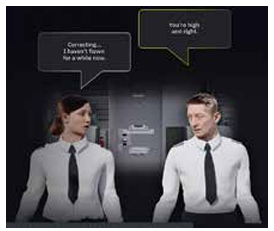
A common mistake while trying to understand the nature of CRM is underestimating its importance and evaluating technical piloting skills and CRM skills separately. Both are highly interconnected to each other and neither of them can be isolated. By their nature, CRM skills are deeply infused into and affect the proper performance of technical skills. Flight crew pays enormous price if he fragments technical skills and non-technical skills without realizing their interconnectivity. In today’s advanced flight deck environment with complex automated systems, it’s obvious that flight crews must go beyond the technical rudder and stick skills. This can be obtained by awareness and effective CRM training which enhances a critical set of observable interpersonal human behaviors and augments technical expertise to create a more productive and safe flight environment.
One should always keep in mind that CRM is not a magical tool to eliminate all errors and assure safety in aviation. Error is an inevitable result of the natural limitations of human performance. On the other hand, CRM can be used to manage error and minimize the accidents. Safe and efficient flight operations depend on flight crew’s success not only on the acquisition of sound technical knowledge and skills but also on the mastery by their cognitive and interpersonal skills which form the basis of good CRM.